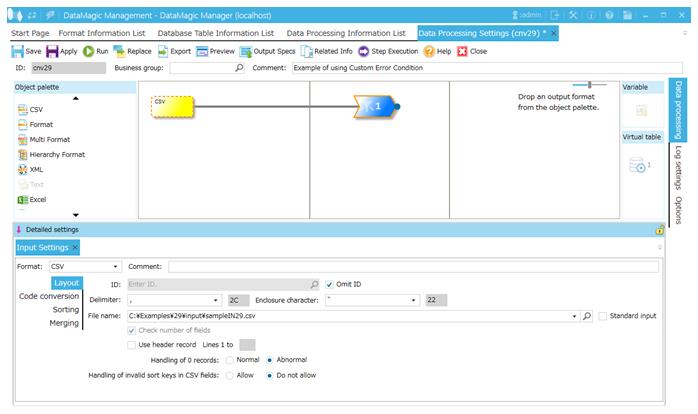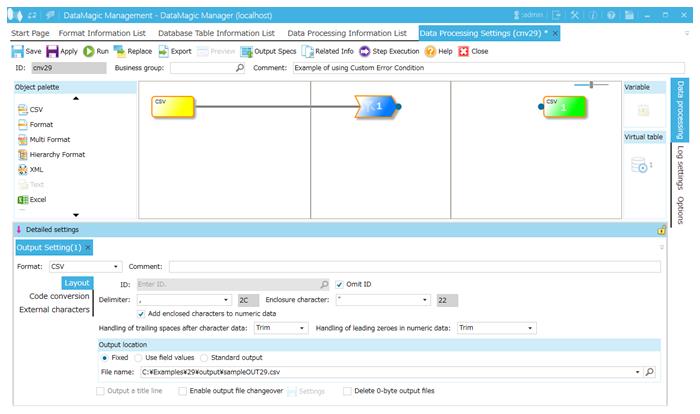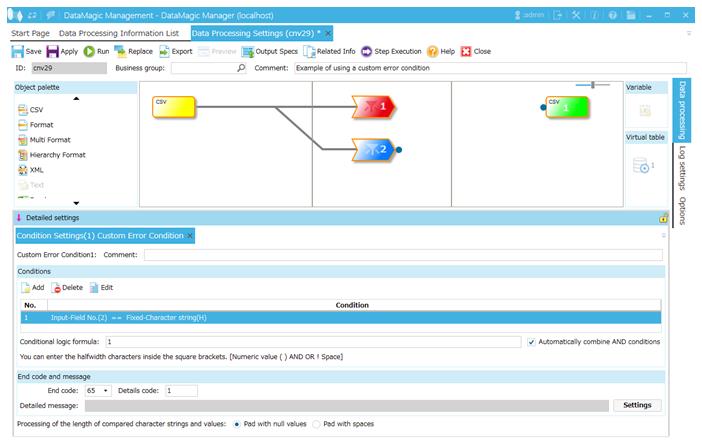Data processing information
Configure the data processing information settings.
In the DataMagic Management screen, click the Data processing to display the Data Processing Information List screen, and then click the New button to display the Data Processing Settings screen. Configure the settings as shown below and save them.
1. Enter cnv29 in the ID field.
2. Configure the settings for the input file (C:\Examples\29\input\sampleIN29.csv).
Select an input file format in the Object palette, and then drag and drop it on the input area. Double-click the icon to display the Input Settings screen.
Configure the settings as shown below.

Screen 8.258 Input Settings screen
3. Configure the settings for the output file (C:\Examples\29\output\sampleOUT29.csv).
Select an output file format in the Object palette, and then drag and drop it on the output area. Double-click the icon to display the Output Settings screen.
Configure the settings as shown below.

Screen 8.259 Output Settings screen
4. Specify the custom error condition (Input-Field No.(2) == Fixed-Character string(H)).
Drag the custom error condition icon and drop it in the condition area.

Screen 8.260 The position of the custom error condition icon
Double-click the custom error condition icon to display the custom error condition setting screen.
Configure the settings as shown below.

Screen 8.261 The Custom error condition setting screen
5. Link the extraction condition and output file.
Choose the Extraction Condition icon and drag and drop it onto the File icon on the right to draw a relation line.

Screen 8.262 Mapping of extraction conditions and output file
6. Specify the output format.
1) Display the Set Mapping Information screen.
Double-click the Mapping icon created on the relation line between the Extraction Condition icon and Output icon. This displays the Set Mapping Information screen.
2) Check the tree view.
Check the tree view of the input (left) should show the fields.
Check the tree view of the output (right) should show the fields.
3) Draw relation lines.
You can draw a relation line by dragging and dropping the field node in the left tree to the field node in the right tree. Draw relation lines as shown in the screen below.

Screen 8.263 Input-Output relation lines
4) Register the mapping information.
Click the OK button to register the mapping information.
7. Click the Apply button to save the data processing information.